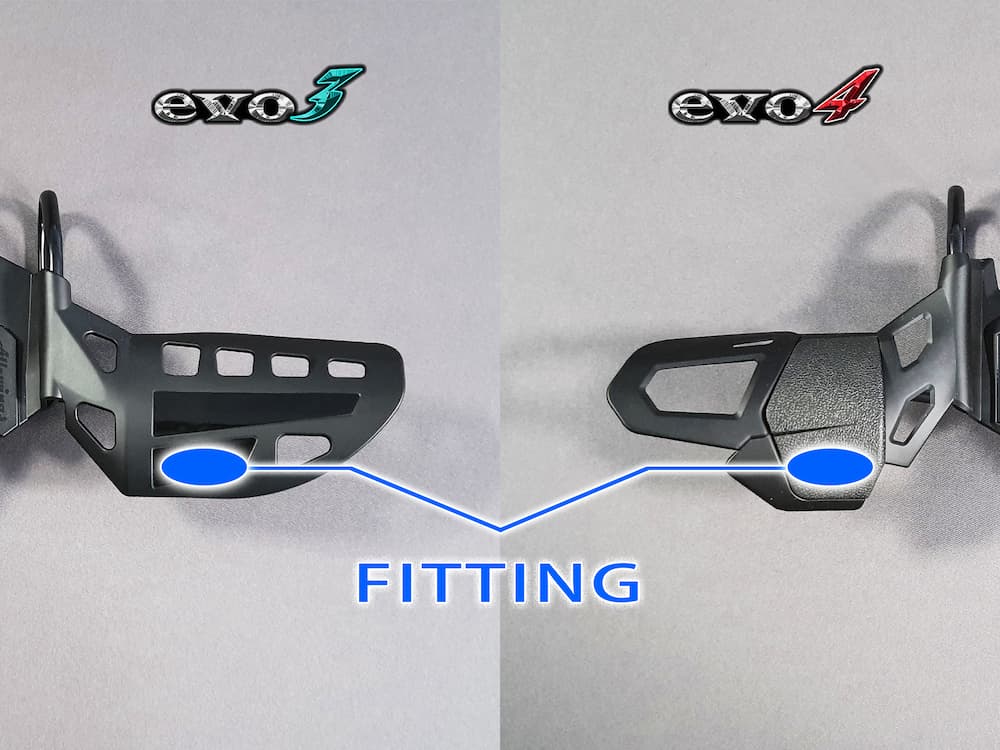
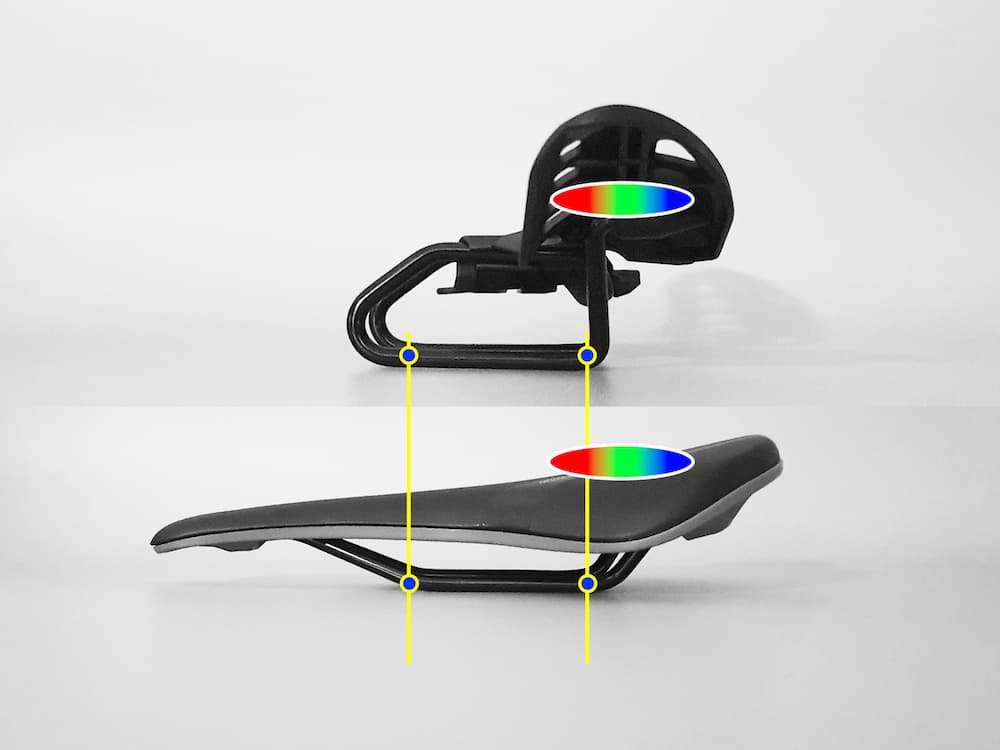
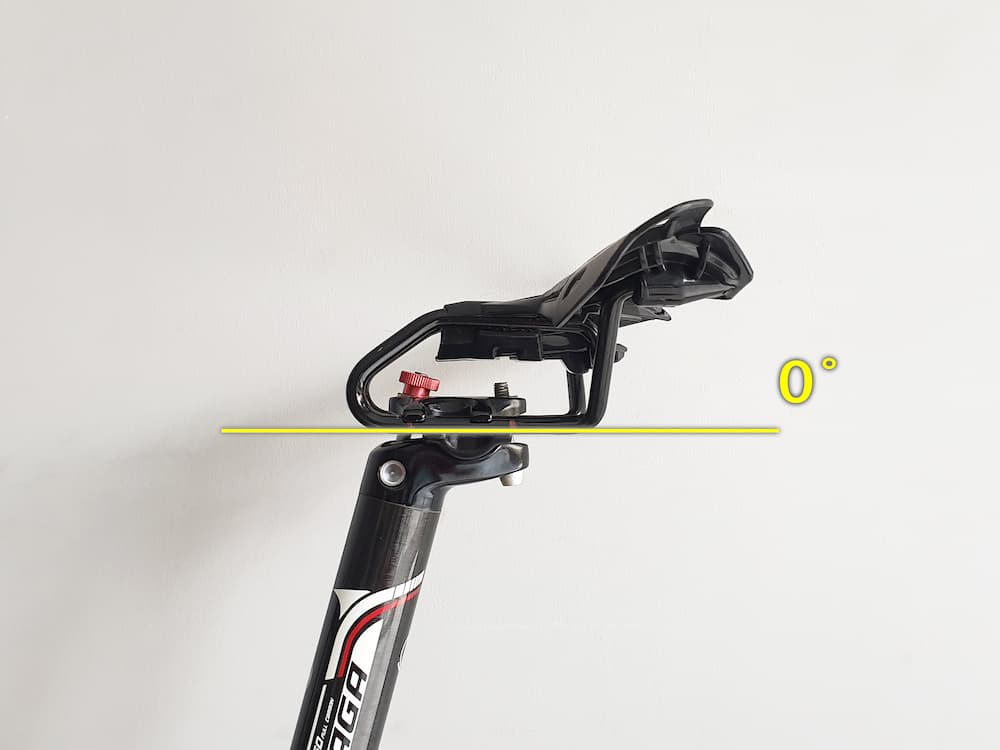
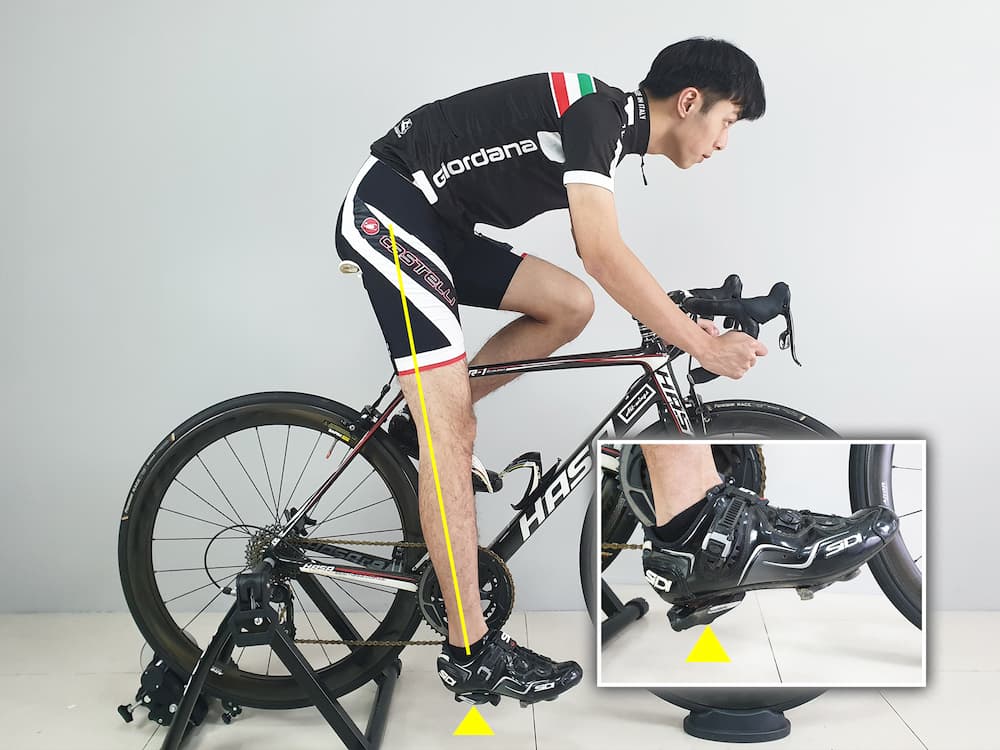
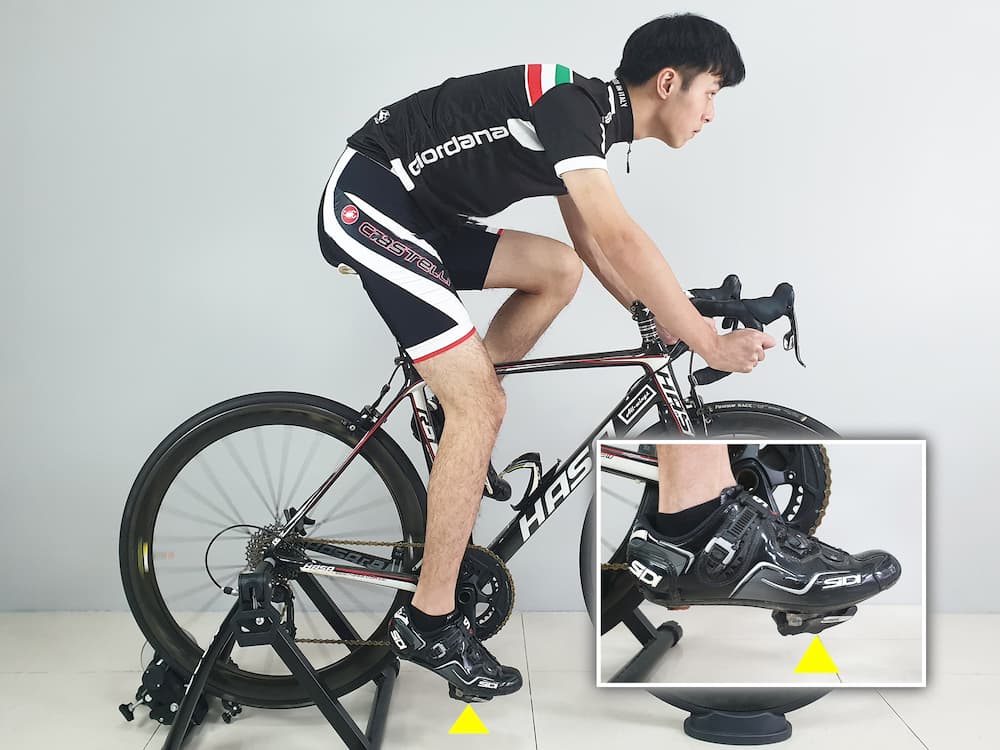
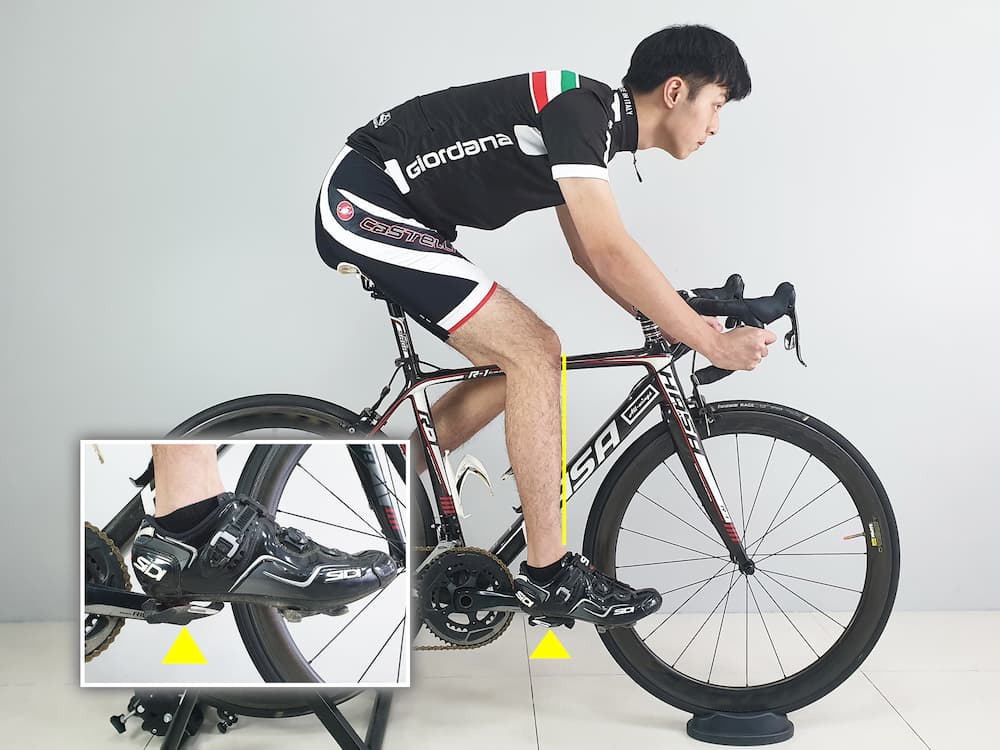
After you sit in the correct position on the saddle, keep the pedal at the 3 o'clock position, and then step on the central axis of the pedal with your heel. The front edge of your calf should be perpendicular to the ground. At this moment, the front and rear position of the saddle is the ideal position.
During the test ride, you can fine-tune it forward or backward within about 1 cm based on your personal feelings and riding habits.


After completing the settings in step 5, your back should be able to arch the cat's back, the elbows should be slightly bent, and your both hands should be able to easily hold the brake hoods.
The main center of gravity should remain on the hips. The ideal pressure distribution should be Hip 90 : Arms 10 : Legs 0
At this step all settings have been completed.
If there is too much pressure on your arms and shoulders when you hold the brake hoods, or if your arms or shoulders tend to feel numb after riding, it means that the cockpit is too long. The saddle should not be moved forward at this moment, but replace the shorter stem.
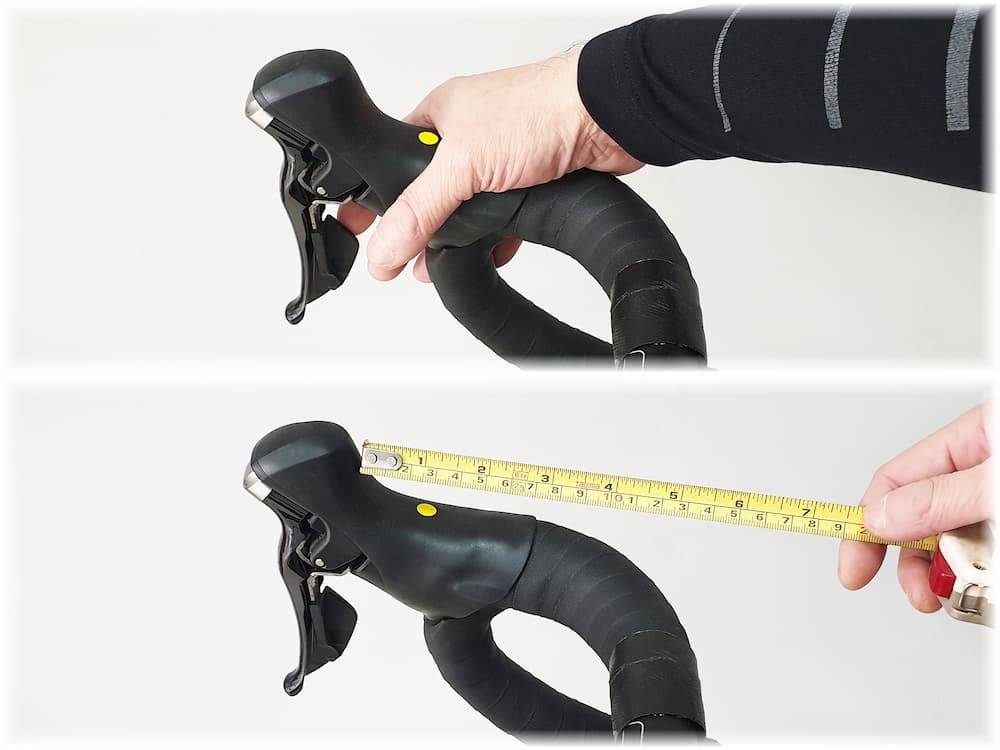
Reference/Simple method for measuring stem length
Mark spots on the handlebars and do a test ride on the road to find where there is less pressure on your arms and shoulders.
Measure the distance from the marked point to the brake hoods. The distance is the size by which the stem should be shortened.